Software development evolution has been an exciting tell-a-tale. It is a remarkable journey from the restrictive approach of developing software in one go (not literally but still relatively faster!) to incremental development. By scaling agile teams many companies has opened up many possibilities by allowing teams to break down software development into small increments.
Each iteration integrates feedback from the earlier versions to improve the software quality. Agile practices provide a continuous improvement approach which is key to successful digital product engineering. We have scouted many valuable resources across the industry to curate statistical insights that will help you understand the state of agile adoption.
Agile Adoption Statistics
- 94% of organizations practice agile
- 52% of companies use agile for 3/4th of their projects
- 64% of organizations have improved software delivery with agile
- 34% of organizations face resistance to agile adoption
- Agile provides 60% more revenue growth than other methodologies
What makes this agile report exciting is how there are several driving factors, like speed, efficiency, and profits, for organizations to adopt agile practices. Understanding the reasons and trends reshaping the IT industry due to agile is key to business success. So, without further ado, let’s start with the critical stats of agile adoption.
Agile adoption
Agile adoption has increased over the years, and more and more organizations are now looking to leverage this iterative approach for their software development projects.
1. 94% of companies practice agile
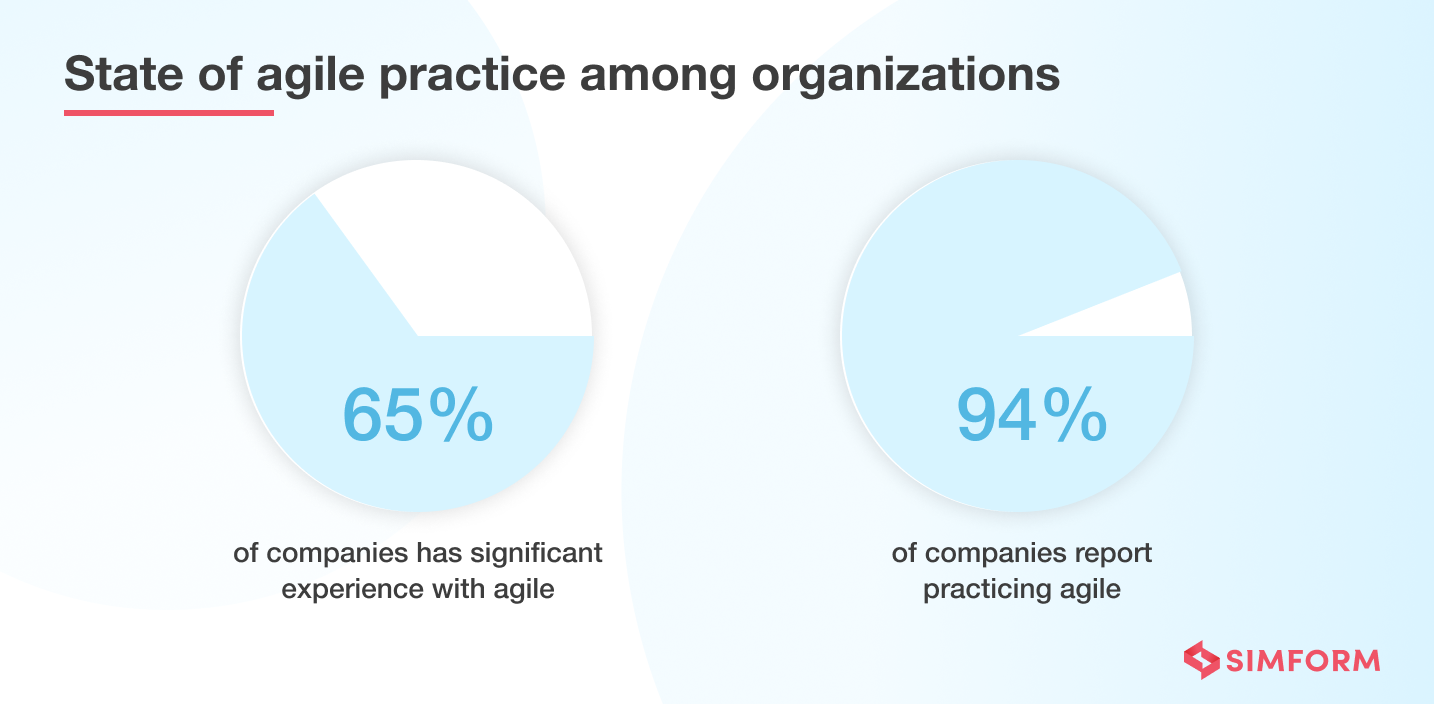
- 94% of companies have been practicing agile for 1-5 years, and 33% have used agile methods for 3-5 years.
- Agile adoption is so extensive that only 4% of companies are unaware of such practices
- 65% of the companies have been using agile methodologies for at least 3 years
- 29% of organizations have 1-2 years of experience in using agile methodologies.
2. 52% of companies use agile for more than 1/2 of their projects
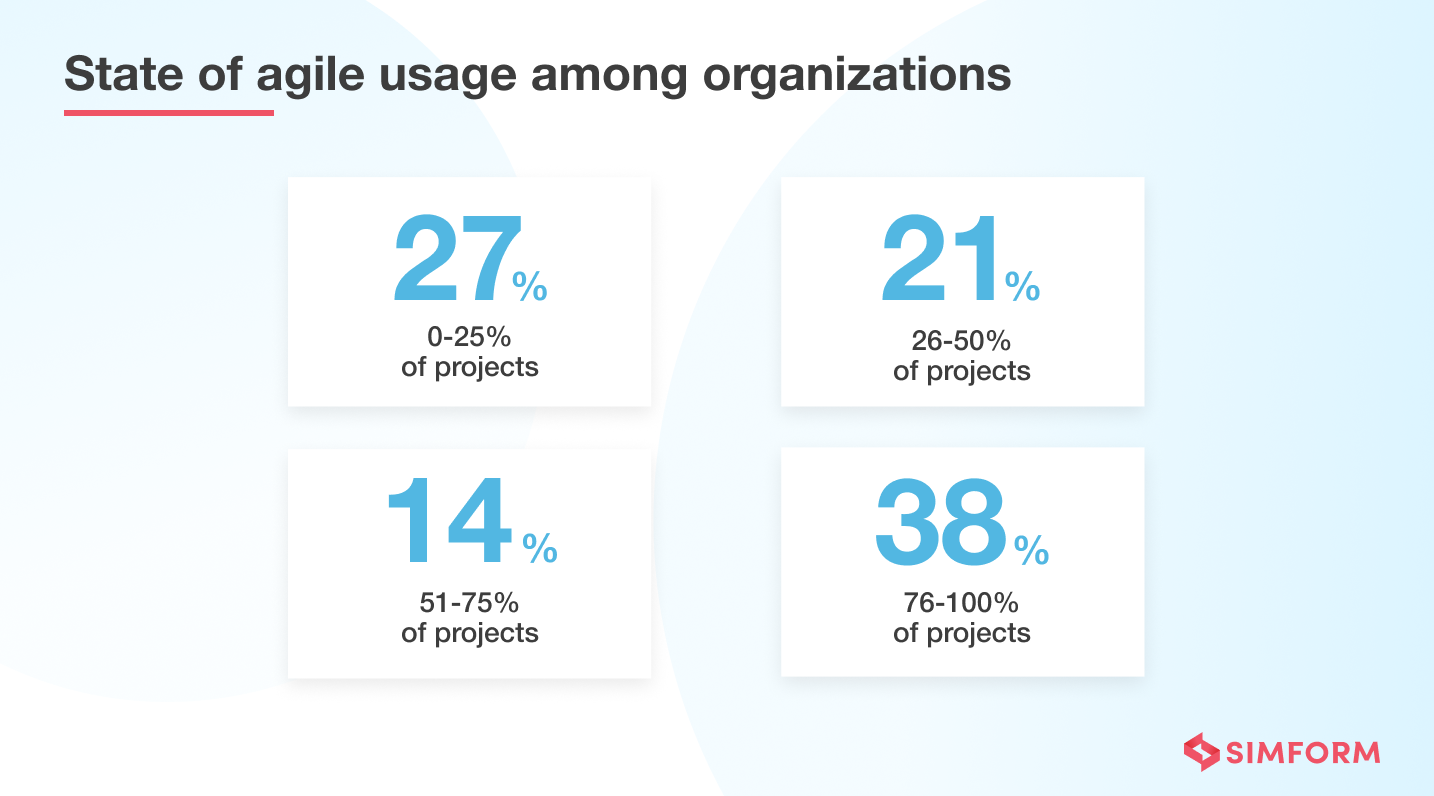
- 52% of professionals from across organizations use agile for most projects.
- 27% of organizations manage up to 25% of projects using agile.
- 14% of companies use agile for 51-75% of their projects
- 38% of professionals rely on agile to manage around 76-100% of projects.
Benefits of agile adoption
1. 64% of companies improved software delivery with agile
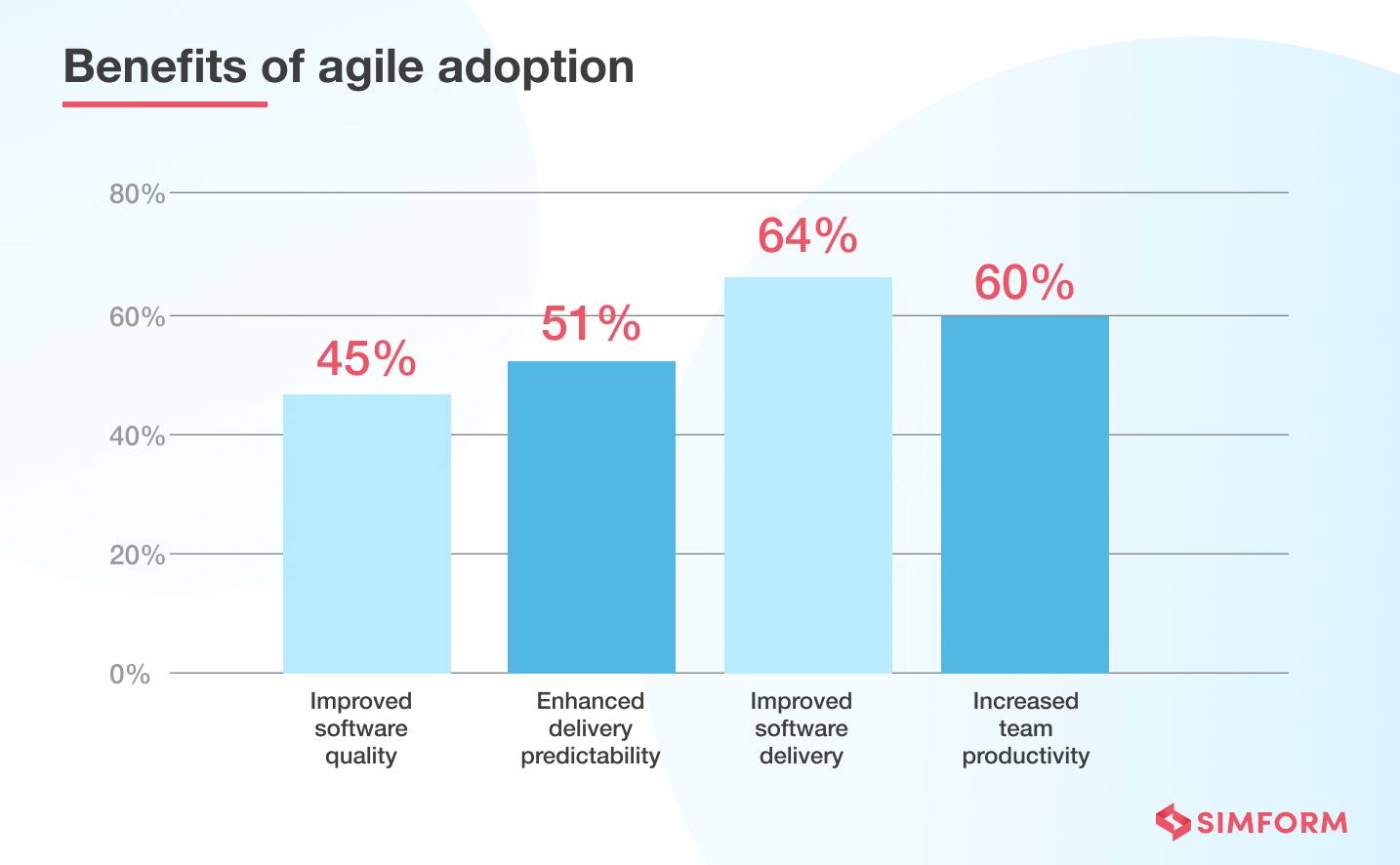
- Agile adoption has improved software delivery for 64% of companies.
- 60% of companies have seen increased team productivity
- 51% have experienced enhanced delivery predictability.
- 45% of companies have improved software quality with agile.
Software development – being a strategic process, CEOs and CTOs must spend enough time strategizing various phases of the process, which conventionally was difficult due to operational management issues.
2. Agile powers a 30% surge in strategic time spending for CEOs
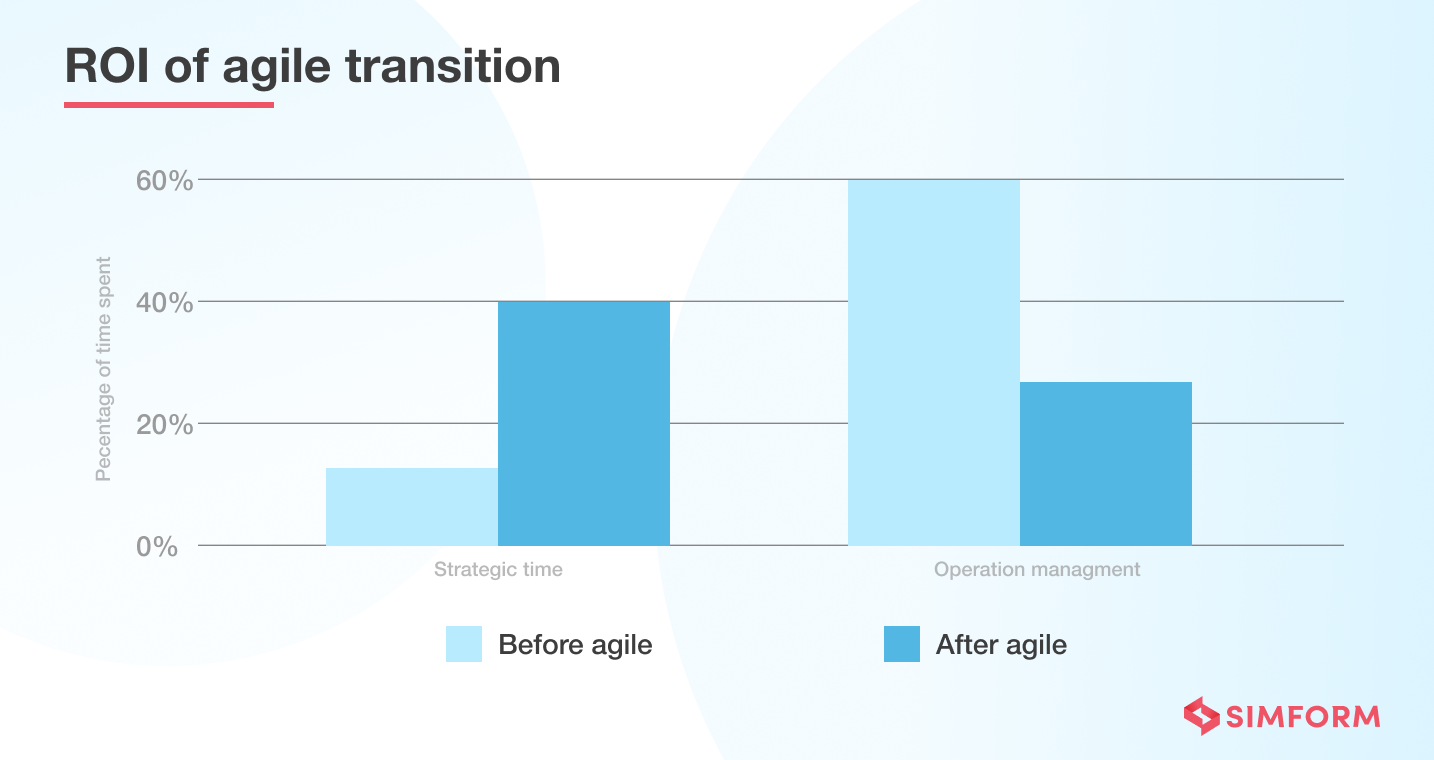
- CEOs of organizations that completed the agile transition can spend 10% to 40% more time on strategizing activities.
- Time spent on operation management was reduced from 60% to 25% with agile.
3. 49% of organizations observed increased customer satisfaction with agile
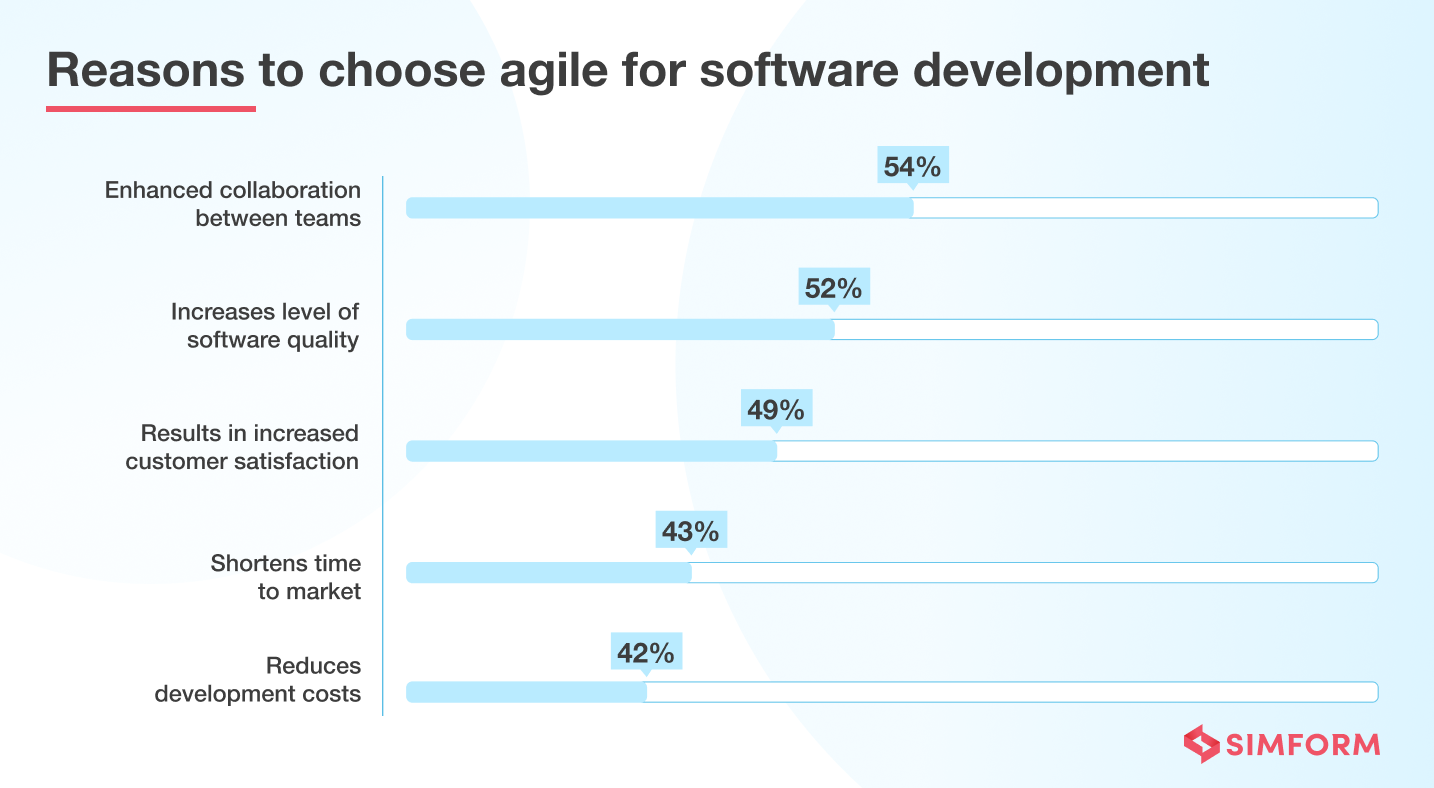
- 49 % of companies saw increased customer satisfaction by using agile.
- 52% of companies choose agile for improved software quality.
- 43% of the organizations are keen on lowering time-to-market with agile
- 42% favor agile to reduce the cost of development.
One of the major challenges in agile implementation for most organizations is management, which may have collaboration challenges, resilience to change, and a lack of skills.
Fortunately, there are several agile management tools available that provide enhanced features.
4. Agile has a success rate of 70%.
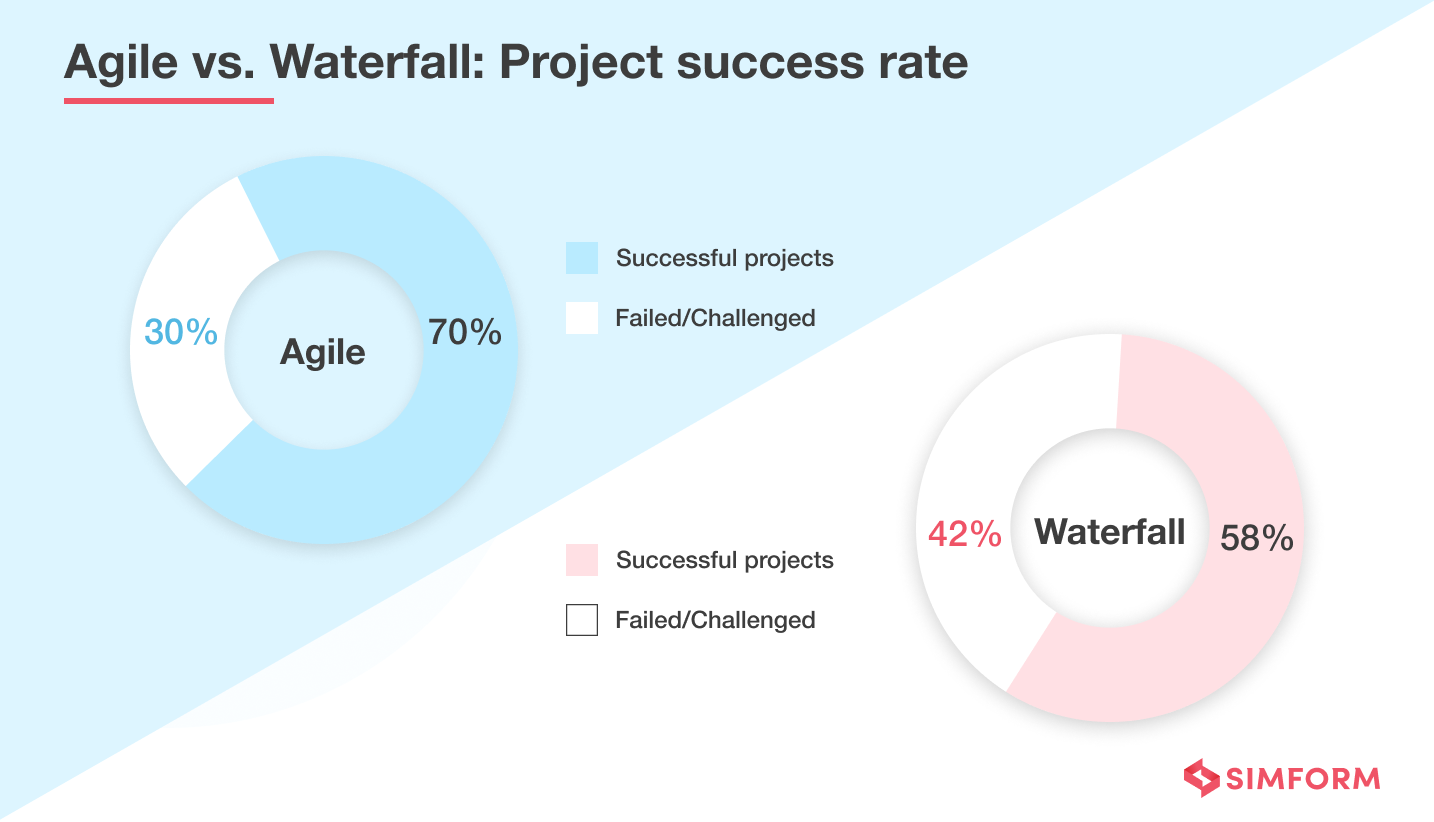
- 70% of agile projects are successful compared to the waterfall methodology.
- The waterfall methodology has a success rate of 58%.
The waterfall approach follows a pre-defined sequence of stages where one stage begins only after the former is completed. Agile provides software development in smaller increments with a feedback loop.
A small change or a single missed deadline in the waterfall’s sequence can disrupt the entire process and affect further releases. Agile provides the flexibility of making quick changes with each iteration. However, there are many agile methodologies, with each one offering different advantages.
5. Companies achieve 60% higher revenue growth with agile
Agile adoption lets companies observe 60% higher revenue growth than other methodologies.
Organizations practicing agile can reduce development costs and time to market and improve software quality, ultimately growing revenue and achieving high ROI.
Agile adoption challenges
Organizations across domains face different issues with agile, including a shortage of skills, resistance to change, and many other factors.
1. 30% of organizations face a minimum of 10 agile adoption challenges
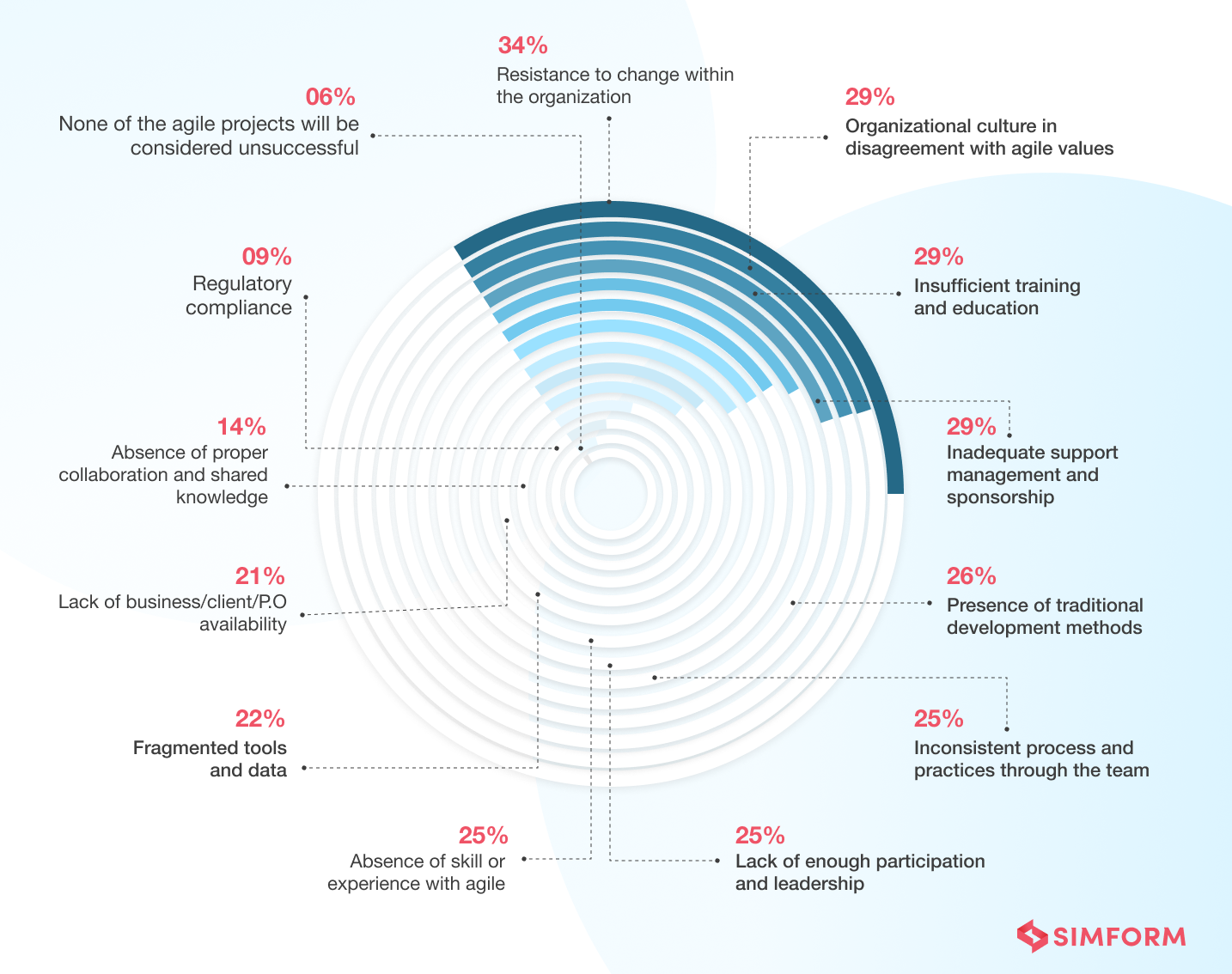
- 34% of organizations have to face resistance to change to agile practices.
- 29% of companies lack enough training and education for agile adoption
- 26% of organizations struggle with the presence of traditional approaches like waterfall
- 25% of companies are short of enough skills or experience in agile methods
- 14% of organizations find a lack of collaboration a barrier to agile adoption.
Agile follows an incremental approach compared to a sequential waterfall methodology. However, the latter has a better success rate regarding waterfall vs. agile.
Agile methodologies
Software development projects require a specific approach for enhanced productivity. Organizations use many agile methodologies, but choosing the best takes time and effort. However, here are some stats on which one is popular in the market.
1. 56% of companies prefer Scrum over other agile methodologies
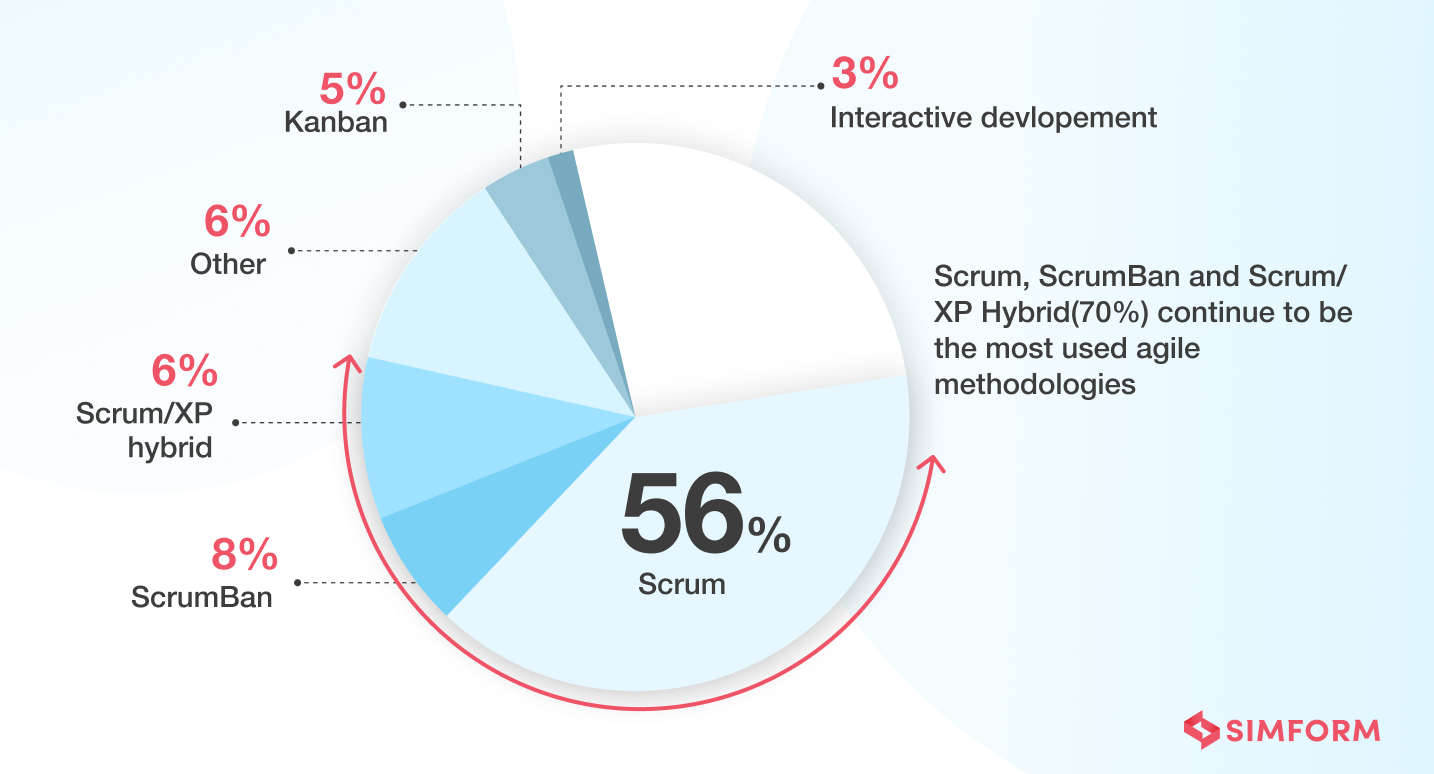
- 56% of companies favor scrum more than any other agile methodologies.
- Interestingly, ScrumBan (Scrum + Kanban) is used by 8% of organizations compared to 5% of Kanban usage
- 14% of organizations leverage hybrid methodologies for optimal agile implementation
Scrum is especially popular among organizations with higher flexibility needs. For projects that need rapid changes, scrum is an ideal choice. The best aspect of scrum is the cross-functional teams and the feedback from the client after each iteration.
Agile tools
Agile tools are a great way to manage sprints and improve results. Many tools like Atlassian Jira, Microsoft Excel, and others provide capabilities to enhance agile efficiency.
1. 58% of companies prefer AtlassianJira as an agile management tool
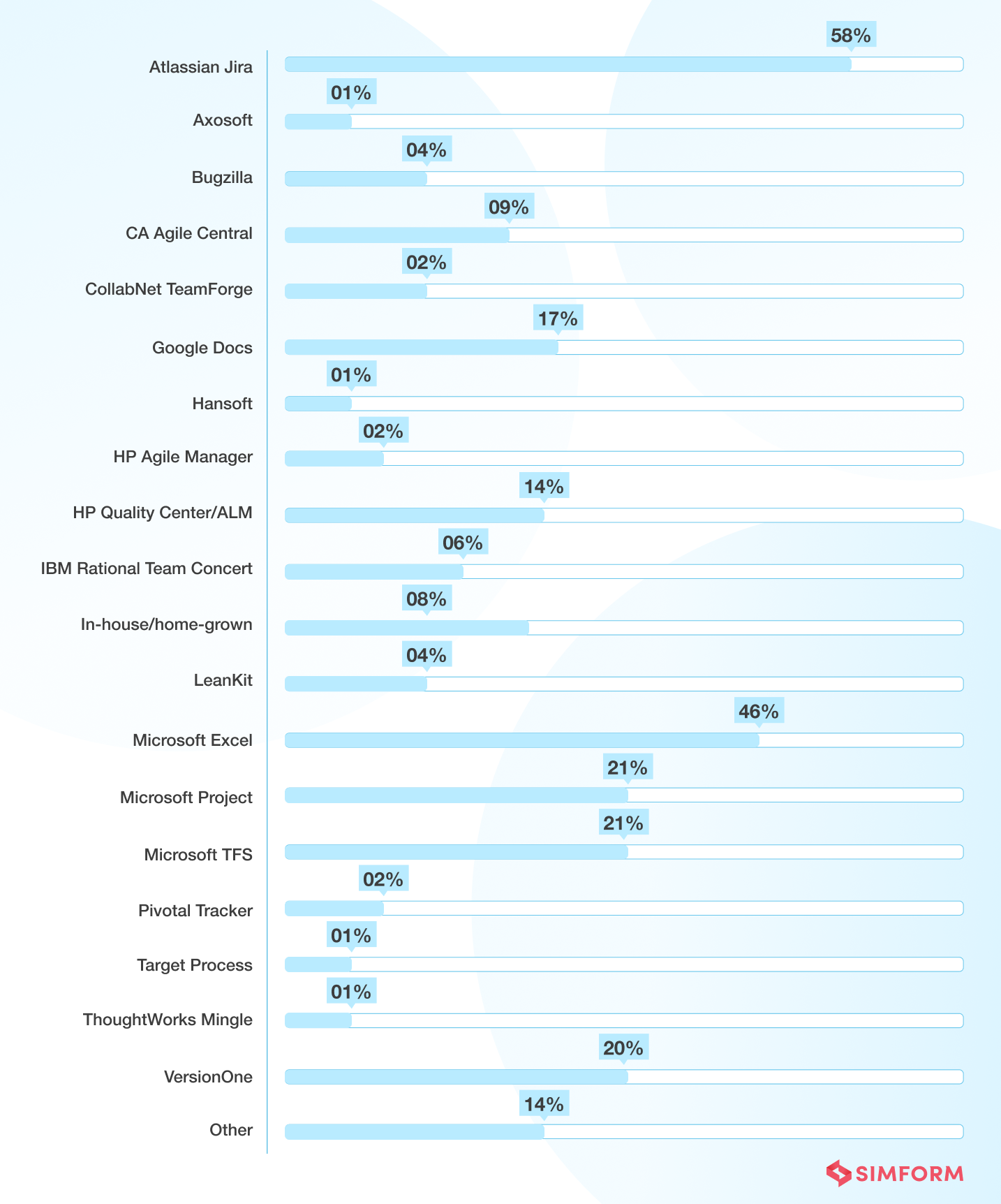
- 58% of companies use AtlassianJira for agile management.
- Microsoft Excel is the second most preferred tool for agile management, with 46% usage
- Microsoft Project and Microsoft TFS each have 21% of usage for agile management.
Agile management tools like Atlassian Jira provide real-time time tracking, project roadmaps, better security, and a centralized dashboard for monitoring.
Conclusion
Agile methodology has several advantages over the waterfall approach. Integrating CI/CD and adopting agile with DevOps culture help create efficient operations. However, the significant reason organizations choose agile practices is to leverage an iterative process.
So, it’s time to start your transformation journey if you want to go agile for your software development. Simform can help you speed up with agile transformation and improve ROI. Contact us for a 30-minute free consultation with our experts.